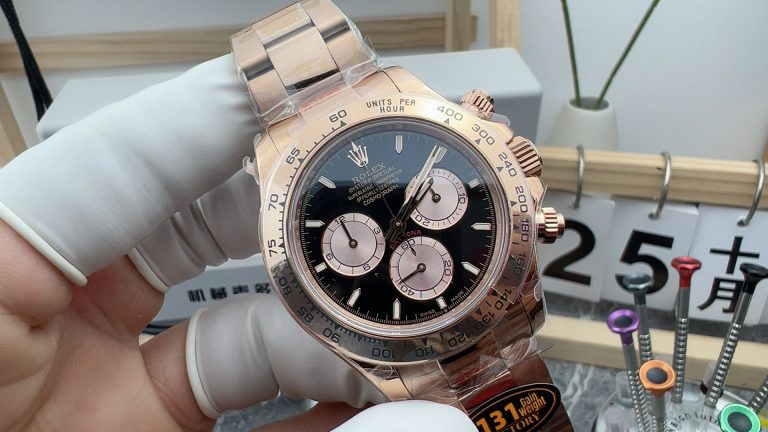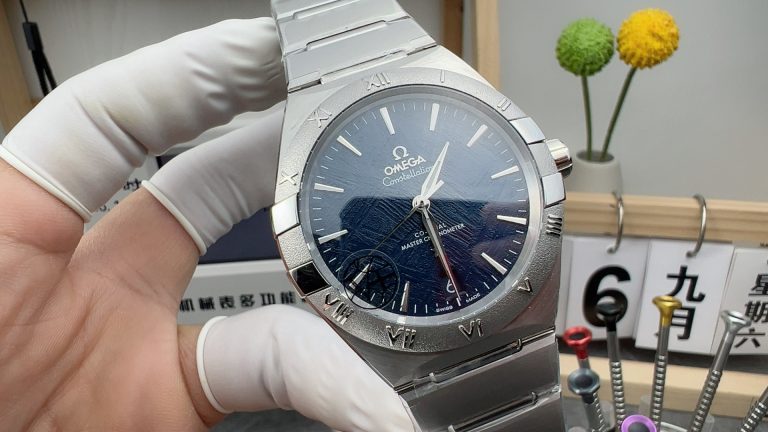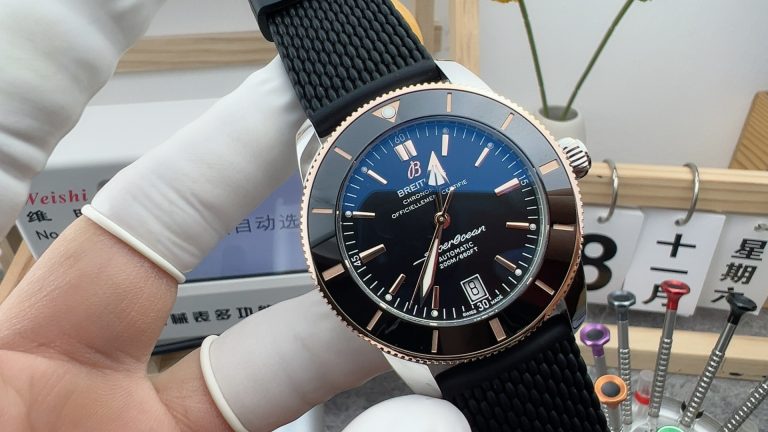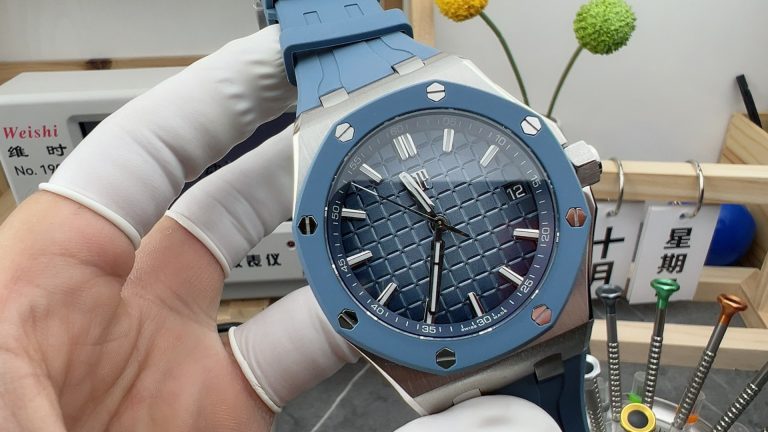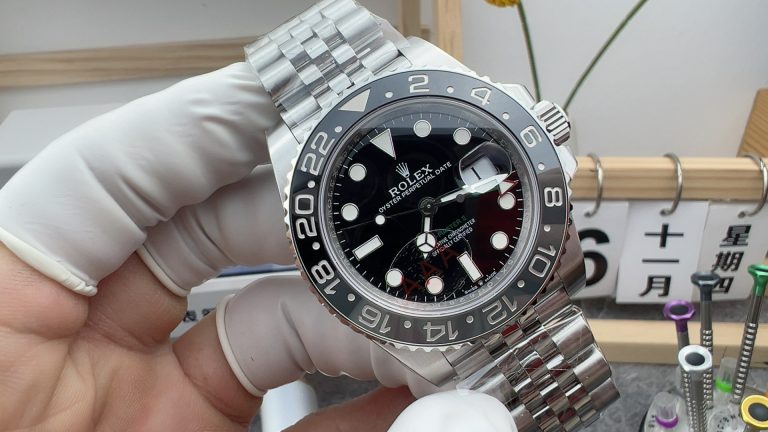Hublot’s BIG BANG series of colorful ceramic reproduction watches: pioneers who break traditional boundaries
In the field of fine watchmaking, the Swiss brand Hublot has always taken the “art of integration” as its core philosophy, combining traditional watchmaking techniques with pioneering material technology to create highly recognizable watch works. Among them, the BIG BANG series, as the brand’s signature product line, has become a representative of modern luxury sports watches with its bold design and technical innovation. In recent years, Hublot’s BIG BANG series of colorful ceramic replica watches have redefined the possibilities of ceramic watches with groundbreaking material applications and color aesthetics. This article will analyze the unique value of this series of watches from multiple dimensions such as material technology, design language and market positioning.
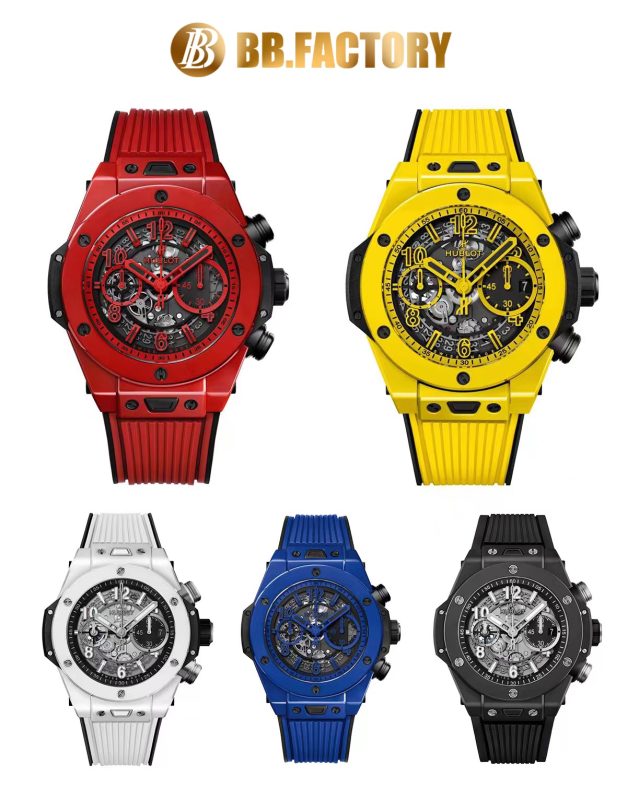
1. Color ceramic technology: Hublot’s material revolution
Ceramic material has been used in the watchmaking industry for a long time, but its traditional tone is mainly black, white and gray, and the process is extremely difficult. Since launching its first all-ceramic watch in 2005, Hublot has continued to push the limits in this field. The core breakthrough of the BIG BANG series of color ceramic replica watches is that it elevates the color expression of ceramic materials to a new height through its self-developed patented technology.
1.1 The manufacturing problem of high purity ceramics
The hardness of ceramics is second only to diamond, but the color of natural ceramics is single and fragile. In cooperation with the Swiss Materials Laboratory, Hublot has developed a synthesis technology called “colored ceramic alloy” : zirconia powder is fused with rare metal oxides (such as cobalt and chromium) under high temperature and pressure to form a high-density, highly scratchresistant colored ceramic substrate. In the case of blue ceramics, Hublot needs to precisely control the ratio of metal oxides at temperatures above 1400°C to achieve a deep and uniform indigo color. The error rate of this process needs to be controlled within 0.1%, otherwise it will lead to color difference or structural defects.
1.2 Stability and durability of color
While traditional colored ceramics often fade due to ultraviolet light or chemical corrosion, Hublot’s colored ceramics use surface nanoplating technology to form a molecular-level protective film on the outer layer of the material. This coating not only enhances the scratch resistance, but also effectively isolates the erosion of color by the external environment. According to laboratory tests, Hublot color ceramics are still below the discernable range of the naked eye (ΔE<1.5) under conditions of simulated daily wear for 10 years.
1.3 Process upgrade of duplicate engraving
The replica watch launched this time is not a simple “refurbishment”, but a re-interpretation of the classic BIG BANG design. For example, the red ceramic bezel uses a gradual dyeing process to transition from a deep red on the edge to a light coral in the center, which is achieved through multiple high-temperature sintering. The green ceramic version incorporates microcrystalline particles that, when refracted by light, give a translucent texture similar to that of jade. For this purpose, Hublot’s team of engineers developed special molds and sintering curves to ensure that the color and texture of each case are highly consistent.
1.4 Hublot color ceramic process comparison
|
colour |
Process characteristics |
Sintering temperature |
Technical difficulty |
|
Classic black |
Zirconia base, no dye |
1350°C |
Density uniformity control |
|
indigo |
Cobalt oxide dyeing, |
1420°C |
Metal oxide ratio accuracy |
|
Tint red |
Three times of high temperature sintering |
1380-1450°C |
Structural stability in multilayer sintering |
|
Emerald green |
The refractive index of light increased by |
1470°C |
Particle distribution uniformity |
|
Neon gradient |
Seven color ceramic laser splicing, |
Stage sintering |
Color transition naturality |
2. Design language: The balance between sports genes and artistic aesthetics
The signature design of the BIG BANG series is its “sandwich” structure: the case is held in place by H-shaped titanium screws in three parts, the bezel, the middle layer and the bottom cover, which are distinct and full of industrial aesthetics. While retaining this classic architecture, the color ceramic replica gives the watch a richer visual level through the adjustment of color and detail.
2.1 The color of the dial and bezel echo
Take the orange ceramic model as an example, the bezel uses high-saturation orange ceramic, and the dial uses a gradual smoke effect, which gradually deepens from the center to the outer edge to form a three-dimensional depth of field. The timemark and hands are covered with Super-LumiNova luminous coating, whose tone contrasts with the warm and cold ceramic bezels to ensure functionality while enhancing visual impact. In addition, the timing sub-plate is sandblasted to form a texture contrast with the polished bezel, and the details show the craftsmanship.
2.2 The philosophy of material mixing
Hublot insisted on the “art of fusion”, and in colored ceramic copies, the middle layer of the case was often made of titanium or King gold (Hublot’s patented rose gold alloy). For example, the purple ceramic bezel is paired with a titanium middle layer, and the cold metallic luster contrasts strongly with the warm texture of the ceramic, while reducing the overall weight of the watch (15% lighter than the all-ceramic model). This mix and match not only improves the comfort of wearing, but also meets the dual needs of contemporary consumers for “personalization” and “practicality”.
2.3 Process upgrade of duplicate engraving
To commemorate the 15th anniversary of the BIG BANG collection, Hublot is releasing a limited edition of 50 pieces of “Neon Gradient” replica. The bezel adopts a seven-color ceramic splicing process, and the ceramics of different colors are seamlessly connected through the nano laser engraving technology to form a rainbow gradient effect. This technology needs to be done in a vacuum environment to avoid the mutual penetration of different colors at high temperatures. The back of the table is engraved with an independent number and the designer’s signature to further strengthen the collection attribute.
2.4 BIG BANG color ceramic reproduction design details
|
Model number |
Case material combination |
Dial technology |
Limited quantity |
Price range |
|
Classic Blue |
Ceramic + titanium |
Sun brushed, glow-in-the-dark coating |
Unlimited quantity |
25,000-28,000 |
|
Sunset Red |
Ceramic +18K gold |
Smoky gradients, diamond-encrusted timepieces |
200 pieces |
48,000-52,000 |
|
Jade Green |
Ceramic + titanium |
Sandblasted secondary disk sapphire mirror |
Unlimited quantity |
27,000-30,000 |
|
Rainbow Edition |
Seven color ceramic |
Laser engraving rainbow texture |
50 pieces |
120,000-150,000 |
3. Market orientation: Transition from traditional luxury to millennials
At a time when competition in the high-end watch market is heating up, the launch of Hublot’s BIG BANG series of colorful ceramic replica watches is not only a demonstration of technical strength, but also a precise end to the brand strategy.
3.1 Attract young high net worth individuals
According to a Morgan Stanley report, millennials (born between 1981 and 1996) account for more than 40% of luxury consumption, and they prefer products that are both technological and artistic. Colored ceramic replica watches have successfully broken into this group with their dazzling colors and sporty style. For example, Hublot’s doodle-themed models, which combine coloured ceramics with enamel painting in collaboration with street artists, command a 200% premium on the auction market.
3.2 Target users and consumption scenario analysis
|
User group |
Core requirement |
Preferred watch |
The proportion of purchasing channels |
|
Traditional collector |
Scarcity, value preservation |
Limited edition (e.g. Rainbow) |
Auction house 40% |
|
New rich |
Personalized, social attributes |
Gradation red/indigo |
Directly owned stores 55% |
|
Tech geek |
Material innovation, technical parameters |
Titanium mix and match |
Online 5% |
3.3 Fill the gap in the middle and high-end market
Traditional colored ceramic watches are mostly concentrated in ultra-luxury prices (more than $500,000), while Hublot’s reproduction models are priced in the range of $25,000 to $50,000, targeting the new rich in emerging markets who pursue individual expression. The brand further lowers the entry barrier through direct stores and online customization services (such as a choice of bezel color combinations), while retaining the exclusive feel of high-end customization.
3.4 Sustainability response
Hublot introduces environmentally friendly processes in the production of colored ceramics, such as the use of recycled metal oxides as dyeing agents and the reduction of production wastewater through water recycling systems. This initiative is not only in line with the global trend of reducing carbon in the luxury industry, but also reinforces the brand’s value of “innovation and responsibility coexist”.
3.5 Comparison of competing products (2023 similar ceramic watches)
|
brand |
Watch style |
Material technology difference point |
Price advantage |
|
Hublot |
BIG BANG colored ceramics |
Multi-color gradient, nanometer coating |
High cost performance (-30%) |
|
Richard Miller |
RM 07-01 |
Carbon fiber ceramic composite |
Premium rate +200% |
|
Audemars Piguet |
Royal Oak ceramic |
Monochrome matte finish |
Brand premium +50% |
4. Controversy and Challenge: The Way forward for colored ceramics
Although Hublot’s colorful ceramic replica watches are highly praised, their development still faces multiple challenges. On the one hand, the repair cost of ceramic material is extremely high, and a slight bump may lead to the entire case being scrapped, which puts strict requirements on after-sales service. On the other hand, some collectors believe that too rich colors may weaken the classic properties of the watch, making it a “fashion accessory” rather than a legacy.
Hublot’s response, however, is clear: to improve product durability through continuous technological iterations, such as the development of self-healing ceramic coatings, while strengthening scarcity with limited editions and artist co-branded models. Ricardo Guadalupe, CEO of the brand, once said: “True luxury is not about catering to everyone, but about creating value for the few who dare to break through.” This philosophy is perhaps the underlying logic behind BIG BANG’s continued trend.
4.1 User feedback and improvement direction
|
Point in dispute |
The proportion of user reviews |
Hublot’s response strategy |
|
High maintenance cost |
65% |
Launched “Ceramic Extended Warranty Plan” |
|
overcolor |
22% |
Develop matte/low saturation color schemes |
|
Uneven weight distribution |
13% |
Optimize titanium intermediate structure |
5. Conclusion: The declaration of the era of pioneer material
Hublot’s BIG BANG series of colorful ceramic replica watches is not only a triumph of material science, but also a keen capture of the spirit of The Times by the watchmaking industry. It combines the cold mechanical structure with the leaping color aesthetics, breaking the binary opposition of “conservative” and “radical” high-end watches. Among the traditional Swiss watchmaking brands, Hublot is perhaps the rebel who is not afraid of “subversion”, and the birth of colored ceramic reproduction undoubtedly sets a new benchmark for the industry – real innovation always begins with the challenge of boundaries.

